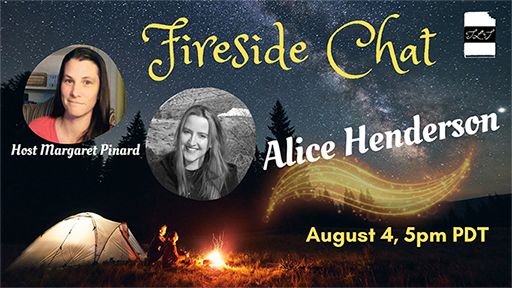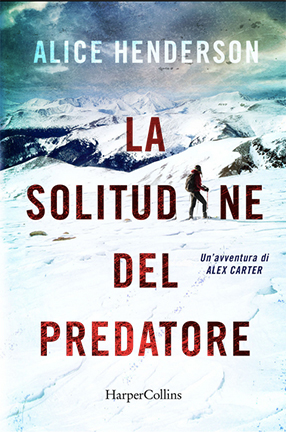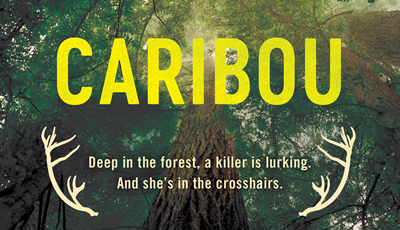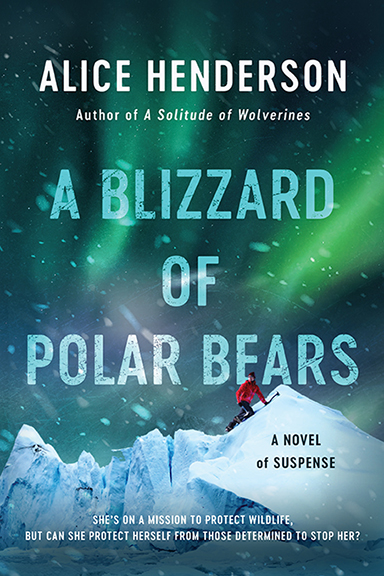NOVEMBER 2023
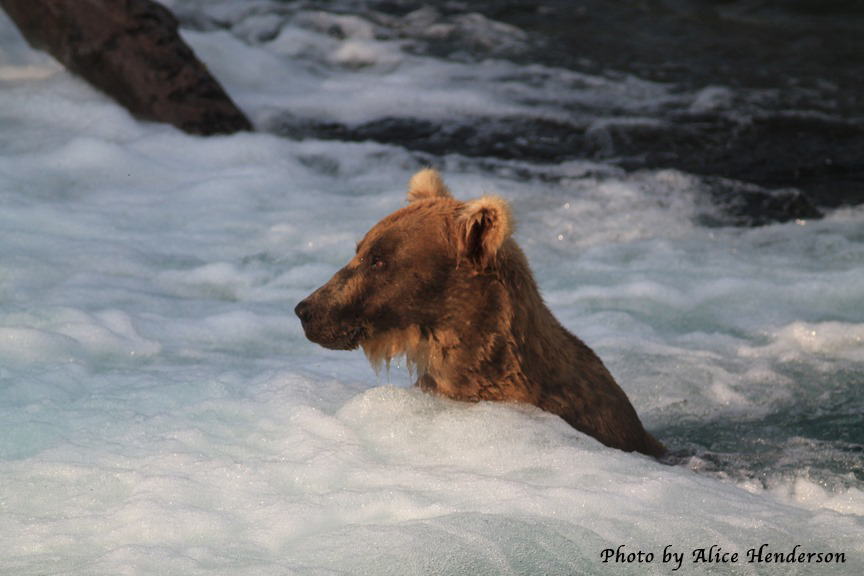
Photo from my travels: Grazer, the Alaskan brown bear who won Fat Bear Week this year, sitting in the part of Brooks Falls known as “the Jacuzzi.” Katmai National Park, Alaska
Photo by Alice Henderson
LATEST PUBLISHING NEWS
TWO EVENTS FOR THE UNIVERSITY OF NORTHERN BRITISH COLUMBIA
I’m thrilled to be participating in two events through the University of Northern British Columbia. Both events are virtual and open to the public.
On Thursday, November 23, from 7 – 8 pm Pacific Time, I’ll be giving an author talk about using fiction to shed light on conservation and about my path to publication.
On Friday, November 24, from 3:30 – 4:30 pm PT, I’m very honored to be on a panel addressing different approaches to caribou conservation. West Moberley First Nations Chief Roland Willson and WMFN Elder Diane Desjarlais will discuss WMFN and Saulteau First Nations efforts to bring the Klinse-Za Caribou herd back from the edge of extinction, while creating new protected areas. Dr. Libby Ehlers will discuss the role of the ecologist in supporting conservation, and I’ll be talking about using fiction to raise public awareness.
Please join us!
Here is the Zoom link for the author talk on Thursday, Nov 23 from 7-8 pm Pacific Time: link
And here is the Zoom link for the panel on Friday at 3:30 – 4:30 pm Pacific Time: link. Passcode is 067643.
NEW FOREIGN LANGUAGE EDITION
I’m pleased to say that a new foreign language edition of my work is appearing! It’s always so neat to see a foreign language edition of a novel.
The German translation of A Ghost of Caribou, titled Still, will be out on November 21, 2023.
I’m so honored to say that over the years my fiction has been translated into German, Italian, Spanish, Turkish, and Russian.
A GHOST OF CARIBOU HARDCOVER ON SALE!
Right now you can get the gorgeous hardcover edition of A Ghost of Caribou for 50% off on Amazon.com. It is also available as an ebook and an audiobook.
You can order A Ghost of Caribou from a variety of sites:
WILDLIFE IN THE NEWS
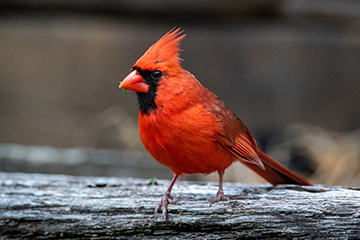
FEDERAL BIRD-SAFE BUILDINGS ACT OF 2023
Did you know that a staggering number of birds are killed by colliding with building glass? Current estimates range from 300 million to a billion deaths each year.
But this can be prevented by using bird-friendly building materials. Right now the Federal Bird-Safe Buildings Act of 2023 has been introduced in Congress. It would promote bird-friendly practices for federal buildings.
You can read more about the Act (H.R.3781) here.
The bill is bipartisan and cost-neutral. You can urge your representative to cosponsor and support the Bird-Safe Buildings Act by using this easy form on the Audubon Society website.
Photo by Joshua J. Cotten on Unsplash
SPECIES SPOTLIGHT
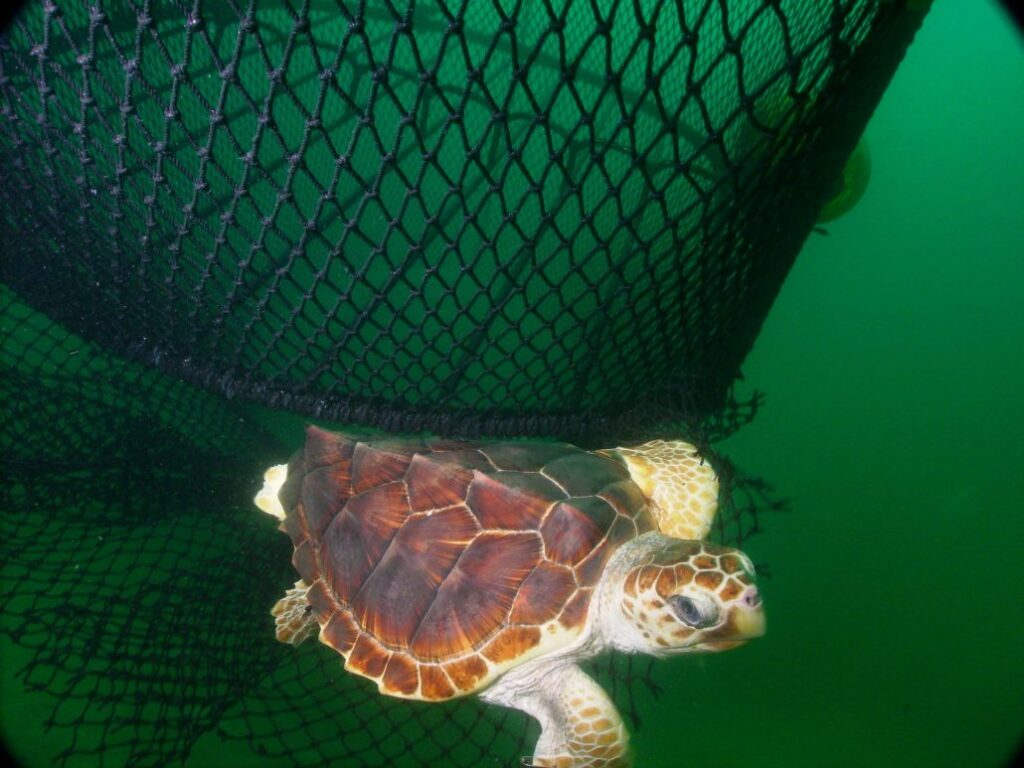
LOGGERHEAD TURTLES
Loggerhead turtles are amazing, some migrating more than 7500 miles between beaches where they lay their eggs. They can weigh as much as 400 pounds and grow to be four feet in length.
But unfortunately, those migrations bring them into contact with countless fishing nets and longline hooks, endangering their lives. These commercial fishing endeavors intending to catch tuna and other fish also host a staggering number of incidental bycatches, including sea turtles, birds, marine mammals, sharks, and more. Fishing outfits can fit their nets with turtle excluder devices, or TEDs, but many do not.
Loggerheads are listed as endangered under the Endangered Species Act, but are under continual threat due to oil and gas development, climate change effects like sea level rise inundating their nesting beaches, bycatch in fishing lines, and tourism development.
To read more about them and what you can do to help, see this informative page.
INTERESTING WILDLIFE FACT
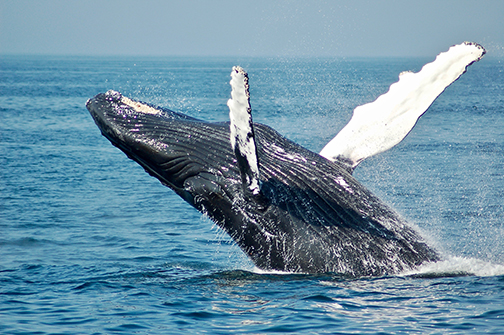
WHALES HAVE HIP BONES
You wouldn’t picture a whale having hip bones, yet they do! Their hips are a vestigial feature from when whales lived on land forty-nine million years ago and walked on four legs.
One ancient land-walking whale, Ambulocetus natans, was about twelve feet long and weighed as much as 400 pounds, with a tremendous, toothed skull.
You can read more about Ambulocetus on this page from the American Museum of Natural History.
Photo by Todd Cravens on Unsplash
GREEN TIP
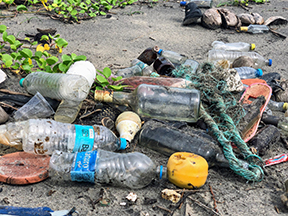
AVOIDING BOTTLED WATER
Bottled water creates enormous amounts of plastic waste. It leads to 1.5 million tons of waste and requires 47 million gallons of oil to produce per year. And the vast majority of bottles are simply thrown away rather than recycled. In addition, bottled water isn’t a good value for your money and leads to the corporatization of water.
The U.S. has some of the cleanest tap water on the planet, so if you’re lucky enough to live in a place with safe tap water, consider purchasing a reusable bottle and fill it with your local tapwater instead of buying bottled water.
If you don’t like the taste of your local tap water, you can buy a filter and chill the water in the refrigerator. You’ll be saving money and being more conscientious.
You can read more about why bottled water is unnecessary here.
Photo by John Cameron on Unsplash
VOLUNTEER OPPORTUNITY
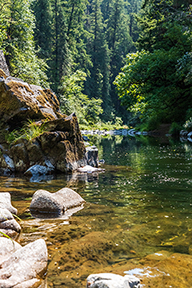
BEACH AND RIVER CLEANUPS
Speaking of plastic trash, you can help with this problem, intercepting trash before it gets into our oceans and rivers.
Plastic litter can pile up on beaches and riverbanks from regular visitor use, but also during holiday celebrations such as the Fourth of July, New Year’s Eve, and other times of the year.
This helpful site lists lake and river cleanups you can participate in.
And if there are no scheduled cleanups in your area, considering hosting your own river or beach cleanup.
This site offers a useful guide on how to organize beach cleanups.
And this page offers insights and tools for hosting a river cleanup.
In addition, you can use the Litterati app to map problematic areas where you are finding litter along our nation’s rivers. You can upload photos, arrange a cleanup, and even get your community involved.
Photo by Taylor R on Unsplash
EXPLORING THE WORLD
AROUND US

WHO’S YEHOODI?
I love old time radio from the 1930s-1940s — tales of detectives, suspense, horror, science fiction, comedy. There is pure gold to be discovered in these wonderful radio plays.
I love music from this era, too. One of my favorite songs from the 1940s is “Who’s Yehoodi?” by Kay Kyser. It never ceases to crack me up. You can listen to the song here. It references a number of radio shows that I didn’t recognize, so I dived in to find out.
Some references were obvious — The Lone Ranger, for one — but others I wasn’t familiar with.
One reference is to Baby Snooks, a radio show about an endlessly-questioning, mischievous little girl who pulled pranks.
Professor Quiz, also mentioned in the song, was a quiz show that ran from 1936-1948. Audience members competed for cash, and listeners could write in with questions and win prizes if their questions were used.
Al Pearce is in reference to the Al Pearce Show about a shy, quietly speaking door-to-door salesman who often hoped no one would be home when he knocked on potential customers’ doors.
And finally — perhaps my favorite reference — one line refers to “The Little Man Who Wasn’t There,” a song based on a poem about a famous haunted house in Antigonish County, Nova Scotia. You can read about the haunting here.
If you’re interested in listening to some old time radio, a whole host of wonderful shows can be found on the nonprofit site archive.org, researched by the Old Time Radio Researchers Group.
And who is Yehoodi? Well, he was a violinist with a very cool name — Yehudi Menuhin.
Photo by Muhammed ÖÇAL on Unsplash
Thank you for subscribing and reading, and I will see you next time!
If you would like to subscribe, unsubscribe, or change the address where you receive notification of Alice’s newsletter, please send an email to newsletter [AT] alicehenderson [DOT] com.
Copyright © 2023 by Alice Henderson. All rights reserved.
AUGUST 2023
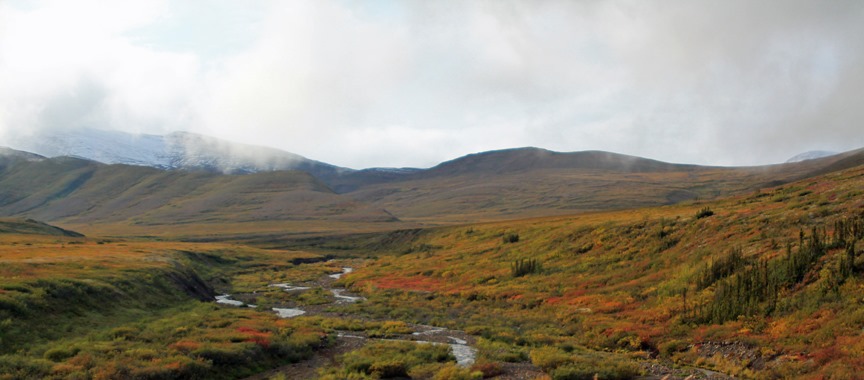
Photo from my travels: Arctic tundra, Yukon, Canada
Photo by Alice Henderson
LATEST PUBLISHING NEWS
PODCAST INTERVIEW WITH SIMPLY WRITE
My author interview with Polly Campbell’s Simply Write podcast is live! Polly is so much fun, and we talk about wildlife, daily writing schedules, following your writing passion, and building a career as an author. You can listen to it wherever you get your podcasts, or at this link.
FIRESIDE CHAT WITH MARGARET PINARD
I had an absolute blast as a guest on Margaret Pinard’s Fireside Chat. We did a Q&A followed by fun writing exercises that the audience could join in on. Our goal was to take a fact and incorporate it into a very short piece of fiction, making that fact relatable and fun. Margaret is a wonderful writer and fabulous host, and I thoroughly enjoyed myself.
You can watch the event here.
INTERVIEW WITH DEB KEISER WRITES AGAIN
I had a blast being interviewed by Deb Keiser on her great blog Deb Keiser Writes Again. We talk about my latest novel, A Ghost of Caribou, wildlife research, and caring for the environment. You can check it out here!
You can order A Ghost of Caribou from a variety of sites:
CHILLY READS TO TRY TO BEAT THE HEAT
I was absolutely delighted to have my novel A Solitude of Wolverines included in this list of Chilly Reads to Try and Beat the Heat in The Buzz Magazines.
You can read the article here.
A SOLITUDE OF WOLVERINES RELEASED IN ITALIAN
I’m thrilled to announce that the Italian translation of A Solitude of Wolverines, La solitudine del predatore, is now available as an ebook or hardcover. A Solitude of Wolverines has now been published in English, Spanish, German, and Italian.
NEW PUBLICATION DATE FOR FOURTH ALEX CARTER NOVEL
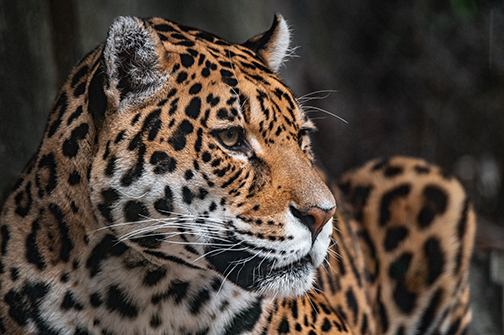
The fourth Alex Carter novel, which is set in New Mexico and is about jaguars, has a new publication date! It will be released in March 2025. I’m really excited for this fourth book to come out. I very much enjoyed writing it, and U.S. jaguars have been in the news quite a bit lately, with the Center for Biological Diversity petitioning for their reintroduction to part of their historical range in New Mexico. (See the Wildlife in the News section from my April 2023 newsletter to read about this petition!)
Photo by Mike van den Bos on Unsplash
WILDLIFE IN THE NEWS
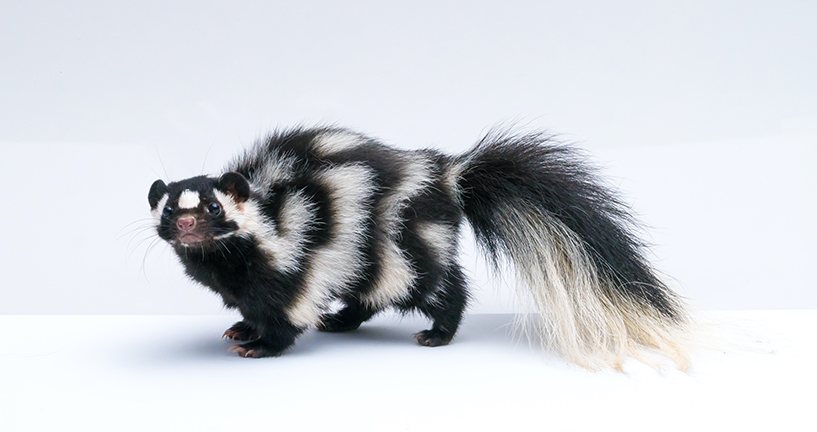
31 SPECIES GET A LITTLE CLOSER TO ENDANGERED SPECIES ACT DECISIONS
As a result of a lawsuit by the Center for Biological Diversity, the U.S. Fish & Wildlife Service has agreed to decide whether 31 species should be listed under the Endangered Species Act (ESA). These particular decisions are long overdue, which unfortunately is typical. In fact, almost fifty species have gone extinct while waiting upon such decisions. Many other species in addition to these 31 are under delayed consideration, as well.
Some of the species included in the lawsuit are the eastern spotted skunk, Georgia blind salamander, the Pecos pupfish, Texas kangaroo rat, Miami cave crayfish, and several freshwater mussel species, and more. Mussel species are often overlooked and yet are vital to ecosystems.
These species are threatened by a number of factors including coal ash, mining, agriculture, oil and gas development, livestock grazing, and cave destruction.
Read more about the suit here.
Photo by Bryan Padron on Unsplash
SPECIES SPOTLIGHT
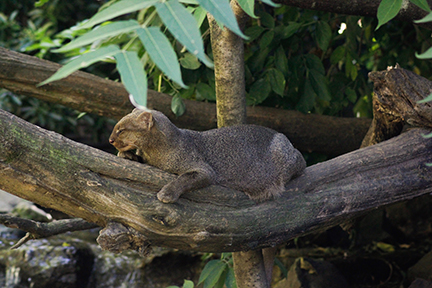
JAGUARUNDI
The jaguarundi (Herpailurus yagouaroundi) is a species of elusive feline with a long tail and almost weasel-like appearance. They live in Central and South America and used to extend into Texas. But one hasn’t been spotted in that state since 1986.
Researchers at Texas A&M University have set up a vast network of hundreds of remote cameras, but as yet have not photographed a single jaguarundi in Texas. However, members of the public sometimes report seeing them in the state.
Jaguarundi have vanished from the U.S. due to development, highway mortality, and loss of habitat to agriculture. While the jaguarundi has been listed under the Endangered Species Act since 1976, little has been done to restore their population, and in fact it took more than thirty years to finalize a federal recovery plan, which was accomplished in 2013.
More needs to be learned about this elusive creature to know how best to help them. You can read more about the jaguarundi here.
Photo by Axel Blanchard on Unsplash
INTERESTING WILDLIFE FACT
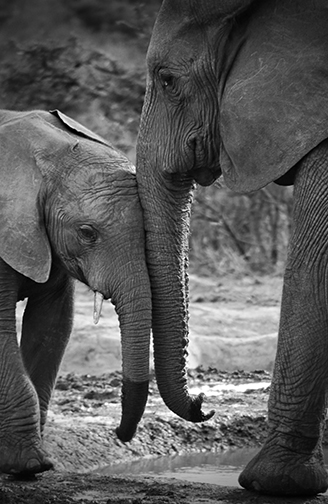
AMAZING ELEPHANT FEET
Elephant feet aren’t just great for navigating vast areas of tough terrain. They also have nerves that allow them to sense vibrations. If another elephant trumpets out of ear-shot, these nerves will actually pick up the vibration from the sound, even from as far away as nine miles! Not only that, but the elephant can then determine the direction of the trumpeting and even which individual is calling out!
An elephant can even press down harder on the ground to better pick up the vibration.
Photo by Leon Buter on Unsplash
GREEN TIP

CUT DOWN ON LIGHT POLLUTION
Light pollution has become an increasingly difficult problem, even though its solution is an easy one. Artificial light interrupts sleep and drowns out the stars, preventing people from seeing the magnificent expanse of the Milky Way. In fact, most people are only able to see a handful of stars on a given night.
But light pollution is a threat to a wide range of wildlife, too. It interrupts circadian rhythms. Migratory birds who navigate by the stars become disoriented and lost. Light pollution on beaches causes sea turtle hatchlings to crawl toward resorts on land rather than out to sea. Fireflies are unable to communicate with each other, drastically reducing their ability to mate and maintain healthy populations. The natural cycles of frogs and toads are disrupted.
But you can help. Assess your own lighting situation. Close your curtains at night. If you have dusk-to-dawn lights or other exterior lights that are left on well into the evening, consider installing a motion-activated light instead. This is not only better for the environment, but it is a better security alert than a constantly burning light.
Talk to your workplace if lights are needlessly left on in your office building all night.
DarkSky International has fabulous tips to help cut down on light pollution.
Photo by Max Gotts on Unsplash
VOLUNTEER OPPORTUNITY

BRING BACK DARK SKIES!
To tie in with this newsletter’s green tip about light pollution, consider taking action in your own yard and even talking to neighbors and your workplace about reducing light pollution.
DarkSky International has fabulous resources for becoming an advocate to help you start a conversation with people about the importance of dark night skies.
If talking to people isn’t quite your scene, consider contributing to community science via the Globe At Night project. Simply observe the stars in your area and record data about how many stars you can see in specific constellations.
Learn more about The Globe at Night here.
Photo by Denis Degioanni on Unsplash
EXPLORING THE WORLD
AROUND US
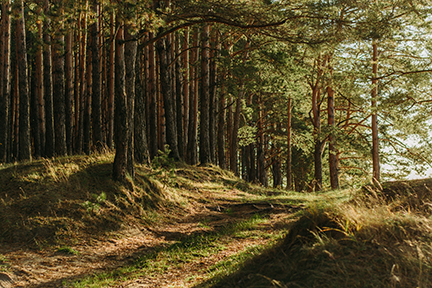
Nature gives us many clues as to what is going on in forests, meadows, beaches, and more.
Cloud formations and wind direction can tell you what kind of weather to expect. Brilliantly green wolf lichen growing on a tree lets you know that the air there is particularly clean. A dirt path that is wet on one side and dry on the other can help you determine direction if you’re lost. Wildlife tracks and other spoor can let you know what species of animal has passed by, and a sudden burst of movement by birds (called a “plow”) can let you know where another big animal is moving through the area, be it bear or human.
I’ve long loved the books of Tristan Gooley, which teach many of these tricks. One of my favorites is The Lost Art of Reading Nature’s Signs: Use Outdoor Clues to Find Your Way, Predict the Weather, Locate Water, Track Animals–And Other Forgotten Skills.
If you learn to read these signs, then even a short walk can take on deeper meaning as you learn how to interpret what’s going on around you. It’s like reading nature’s newspaper.
Even better, bring along a notebook or sketchbook and jot down what you see so that you can revisit that area later and see what has changed and what has stayed the same.
Photo by Irina Iriser on Unsplash
Thank you for subscribing and reading, and I will see you next time!
If you would like to subscribe, unsubscribe, or change the address where you receive notification of Alice’s newsletter, please send an email to newsletter [AT] alicehenderson [DOT] com.
Copyright © 2023 by Alice Henderson. All rights reserved.
APRIL 2023

Photo from my travels: Alaskan brown bear, Katmai National Park, Alaska
Photo by Alice Henderson
LATEST PUBLISHING NEWS
INTERVIEW WITH ANN ARBOR LIBRARY
I had a delightful time talking with the Ann Arbor Library about the latest thriller in my Alex Carter wildlife biologist series, A Ghost of Caribou, as well as inspiration, characterization, suspense, and what we can all do to help wildlife.
You can watch the interview here.
Last year about this time, we discussed the first two books in the series, A Solitude of Wolverines and A Blizzard of Polar Bears. You can find that interview here.
You can order A Ghost of Caribou from a variety of sites:
THE FOURTH ALEX CARTER THRILLER IS ABOUT JAGUARS
Though many people picture jaguars as only living in tropical forests in Central and South America, we still have them in the U.S., though they face many challenges. One jaguar, El Jefe, moves between Arizona and Mexico and has been captured numerous times on remote cameras.
They are a fascinating, adaptable species, and so the next Alex Carter book finds Alex on a remote wildlife sanctuary in New Mexico, searching for an elusive jaguar.
It will be out on March 2025!
WILDLIFE IN THE NEWS
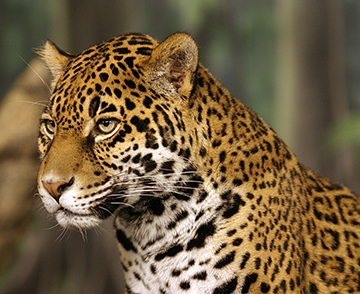
JAGUAR REINTRODUCTION
Jaguars used to roam throughout the Southwest in California, Arizona, New Mexico, Texas and in colonial times, people reported seeing them even as far northeast as North Carolina, Kentucky, Ohio, and in the Lake Erie region of New York.
Though many people think of jaguars as denizens of jungles, they are highly adaptable, and live in a variety of habitats including deserts, coniferous forests, grasslands, swamps, and even beaches.
Unfortunately, here in the U.S., they have been driven to near-extinction by hunting and habitat loss.
But now the Center for Biological Diversity has petitioned the US Fish & Wildlife Service to reintroduce jaguars to their former range in New Mexico and to designate more critical habitat for them in both New Mexico and Arizona.
For the answers to many FAQ about jaguars and their possible reintroduction, click here.
Photo by Wikimedia Commons, http://commons.wikimedia.org/wiki/Main_Page / Cburnett
SPECIES SPOTLIGHT
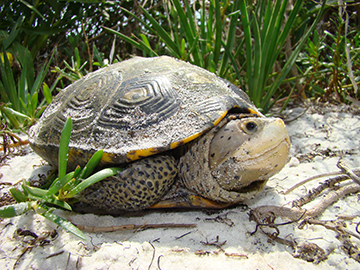
DIAMONDBACK TERRAPINS
Diamondback terrapins are the only turtles in the world which live solely in the mixed salt and fresh water of estuaries. They are found along the Gulf and Atlantic coasts.
They sport handsome patterned shells and play an important part in salt marsh and mangrove ecosystems by eating marsh snails, which in turn keeps marsh grass communities healthy.
They are threatened by a number of factors, including road collisions, habitat loss, drowning in crab pots, sea level rise, and illegal wildlife trafficking.
To read more about diamondback terrapins, click here.
Photo by George L. Heinrich
INTERESTING WILDLIFE FACT
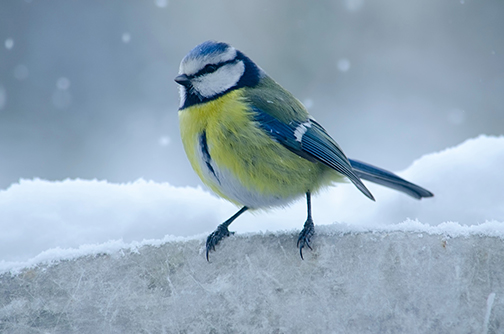
WHY BIRDS DON’T GET FROSTBITTEN FEET
The Sierra Nevada mountains have been hit with some serious snowstorms this year, delivering much needed precipitation. Whiteout conditions swept through the forests as blizzards moved through the trees. Birds gripped snowy branches in gusting winds, feathers fluffed up against the cold.
So why don’t birds get frostbitten feet?
Their feet can get quite cold. But birds don’t get frostbite because their feet are mainly bones and tendons, not muscles or nerves, and the cells in their feet have very little fluid. Blood circulation in birds is quite rapid, so blood remains in the feet for too short a time to cool to dangerous levels.
In addition, the special circulation of birds, called countercurrent heat exchange, warms up colder blood coming from the feet as it returns to the body.
Photo by REGINE THOLEN on Unsplash
GREEN TIP

ELIMINATE JUNK MAIL AND SAVE TREES
Do you get a lot of unwanted junk mail?
In order to produce junk mail each year, an estimated 100 million trees are destroyed. In addition, billions of gallons of water are wasted in its production. The USPS sends out more than a hundred billion pieces of junk mail every year.
But you can reduce the waste caused by this by taking yourself off of companies’ mailing lists and help keep trees where they belong — in the forest.
A great non-profit organization, Catalog Choice, makes this simple. Just go onto their website, enter in the catalogs you no longer wish to receive, and they will handle the rest for you.
You can visit them here and donate, as well.
If your local post office doesn’t already, encourage them to place out paper recycling bins for customers who have P.O. boxes. This will make it easier for them to recycle unwanted material on the spot.
Photo by Erik Mclean on Unsplash
VOLUNTEER OPPORTUNITY
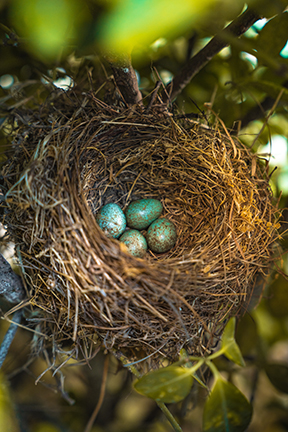
NESTWATCH
Interested in helping biologists gather data on nesting birds? NestWatch is part of the Cornell Lab of Ornithology, and the project monitors bird nests in order to track changes in the reproduction of birds. Anyone can help gather data!
All you have to do is go to this site and take a short quiz. Then you just watch nests and record and submit your observations.
On this same page, you can learn about the scientific impact of Nestwatch as well as find an easy guide to identifying bird nests and eggs, and much more.
If you’re interested in building birdhouses, The Cornell Lab of Ornithology has a great resource here.
Building birdhouses can be a great activity to do in a group, which can help build community and encourage people to become engaged in conservation.
Photo by Akram Huseyn on Unsplash
EXPLORING THE WORLD
AROUND US

I love learning languages, and it’s a great way to explore a culture and challenge yourself with the intricacies of foreign language grammar. I started learning Polish because I love the sound of it. But I’ve since learned it’s one of the top ten most difficult languages to learn. So I’ve been using a variety of methods to learn it — classes at a university, apps like Duolingo and Rosetta Stone, and various textbooks.
But one source of joy for me on this language journey are the totally weird sentences that Duolingo comes up with. I don’t know if these sentences are strung together using some kind of crazy Madlib-type method, or if a team of Polish programmers are just laughing themselves silly coming up with this stuff. But here are some of my favorite examples:




Thank you for subscribing and reading, and I will see you next time!
If you would like to subscribe, unsubscribe, or change the address where you receive notification of Alice’s newsletter, please send an email to newsletter [AT] alicehenderson [DOT] com.
Copyright © 2023 by Alice Henderson. All rights reserved.
FEBRUARY 2023
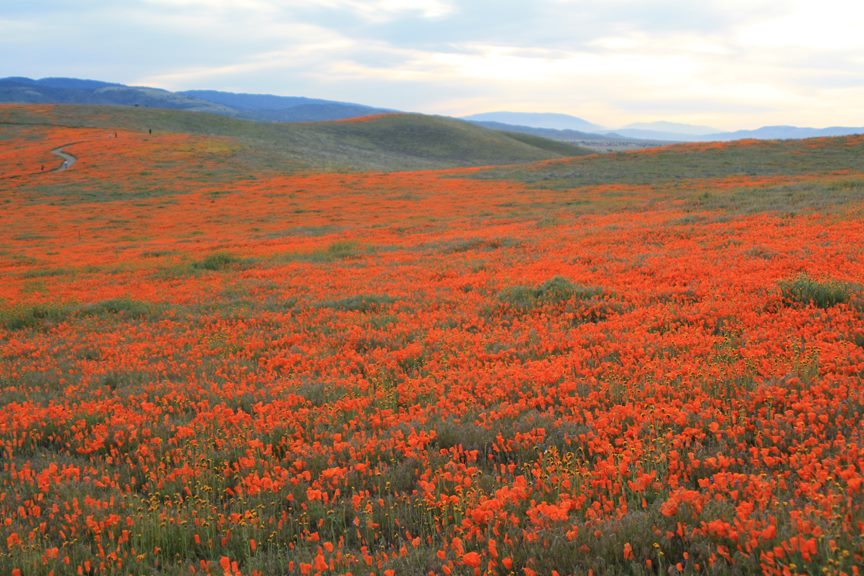
Photo from my travels: Antelope Valley California Poppy Preserve
Photo by Alice Henderson
LATEST PUBLISHING NEWS
A GHOST OF CARIBOU IS 50% OFF ON BARNES & NOBLE AND AMAZON
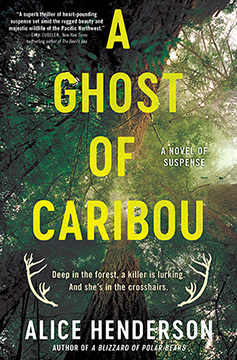
Right now the gorgeous hardcover of my latest thriller, A Ghost of Caribou, is 50% off on Barnes & Noble and Amazon. It is also available as an ebook and an audiobook.
Building upon the highly acclaimed debut of A Solitude of Wolverines and its follow-up thriller A Blizzard of Polar Bears comes the eagerly anticipated and electrifying third installment, in which wildlife biologist Alex Carter encounters an unsolved murder and a town in turmoil while in search of a majestic, all-but-vanished animal.
For more information, please click here.
You can order the book from a variety of sites:
Q&A WITH DEBORAH KALB

I was delighted to do a Q&A with fellow author Deborah Kalb. She always asks such great questions! I talk about mountain caribou, the dynamic between my characters, and the joy of finding animal tracks in snow.
You can read the Q&A here.
WILDLIFE IN THE NEWS

CALIFORNIA INCLUDES INSECTS UNDER ITS ENDANGERED SPECIES ACT
Four species of bumble bees were just listed under the California Endangered Species Act (CESA). This invaluable listing happened despite pressure from commercial agriculture and pesticide groups. These groups sued the state, stating that insects should not be listed on the CESA. Originally, a court ruled in favor of the industry groups. But after an appeal, the California Supreme Court ruled that insects could indeed be listed on the CESA.
The species that got protection are the Suckley cuckoo bumble bee, Crotch’s bumble bee, western bumble bee, and Franklin’s bumble bee.
It’s a huge win for invertebrate conservation.
To read more about this decision, click here.
Photo by Léon McGregor on Unsplash
SPECIES SPOTLIGHT
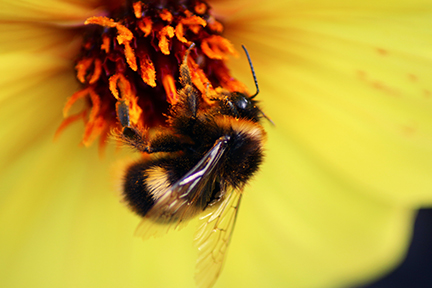
NATIVE U.S. BEES
When we think of bees, we often picture the domesticated honey bee, which is actually from Europe. But the United States has many fascinating species of native bees.
The spring beauty mining bee, for example, forages along the forest floor. It’s a solitary species, not living in a hive. It builds small chambers underground where single baby bees feed off piles of nectar left by the adult.
Bumble bees pollinate our many native wildflowers. Sometimes after drinking nectar, they grow sleepy and will nap on flowers.
Some bumble bees, such as the rusty-patched bumble bee, are in drastic decline. You can help by planting native plants in your yard and providing valuable pollinator habitat. Check out the Green Tip section of this newsletter for ways you can help pollinators.
To learn more about our wonderful native bees, click here.
Photo by Victoria on Unsplash
INTERESTING WILDLIFE FACT
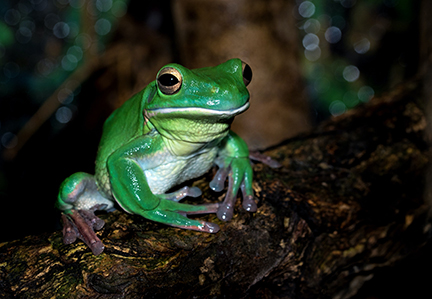
WINTERTIME FOR FROGS AND TOADS
Ever wonder how amphibians survive bitter winter temperatures? While all of them bulk up before the winter, they have different survival strategies.
Aquatic frogs will swim down below the freezing layer in water. There they float at the bottom of the lake or pond.
Toads will burrow about three feet underground, hunkering down below the frost line in the soil. They’ll use rodent burrows sometimes, or crawl down under logs. Sometimes they gather in a communal setting, snuggling up with other toads.
Tree frogs are actually freeze-tolerant and will hide beneath leaf litter. Some can be frozen for eight months out of the year and rebound when the spring thaw happens.
Frogs that live in warmer climes do not hibernate. Instead they estivate, going into a state of dormancy during the dry season.
Photo by David Clode on Unsplash
GREEN TIP
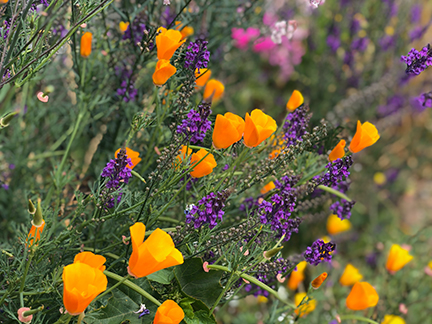
MAKE YOUR YARD WILDLIFE-FRIENDLY
A fabulous way to help wildlife is to wild up your lawn. Americans spend an inordinate amount of time watering, tending, and weeding their lawns, which unfortunately results in a monoculture that does not support wildlife. But if you’re ready to make your yard into a more wildlife-friendly space, you’ll be providing valuable habitat for pollinators and many other species.
Some ways to make your yard more wildlife friendly is to provide native plants. The Xerces Society has an excellent resource for finding appropriate plants for your area. Just click here.
Not raking up leaves in the fall is an invaluable thing you can do. Fallen leaves provide winter cover for butterflies, bumble bees, tree frogs, and many other species.
Provide a water source such as a bird bath, a small upside down container with a hole to welcome frogs and toads, and even a bat house.
Reducing pesticide use is also important. Pesticides work their way into our environment, contaminating water and poisoning animals as they work their way up the food chain.
You can also reduce the use of outdoor lights, which are intrusive to wildlife. Many birds use the stars to navigate, which can be difficult in light-polluted areas. Place decals on the OUTSIDE of your windows to reduce bird strikes.
With these steps, you’ll end up with not only an attractive, flowering yard, but a welcome haven for wildlife.
Photo by Charlie Wollborg on Unsplash
VOLUNTEER OPPORTUNITY
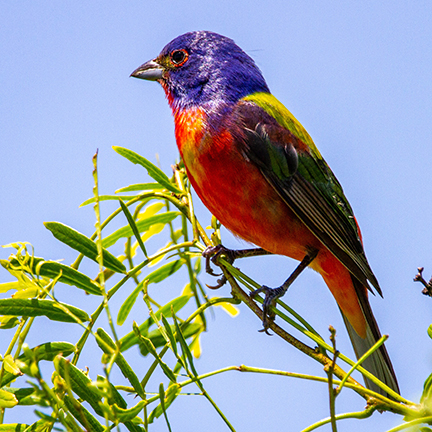
GREAT BACKYARD BIRD COUNT
The Great Backyard Bird Count is happening this year from February 17 – 20.
You can participate by going to your favorite place to watch and listen to birds. Just count and identify them, then submit your findings via your computer or mobile device. You can even share any photos you take.
This is a great activity that doesn’t take a lot of time if you are very busy. You need only spend as little as 15 minutes listening and looking for birds.
People contribute from all over the globe. Last year observers from 192 countries contributed data. You can see the global results here and look at the results for your own local area here.
Once the bird count starts in February, you can watch live results roll in.
Your data will help researchers around the world better understand current bird trends.
For more information and to sign up to participate, click here.
Photo by Joshua J. Cotten on Unsplash
EXPLORING THE WORLD
AROUND US
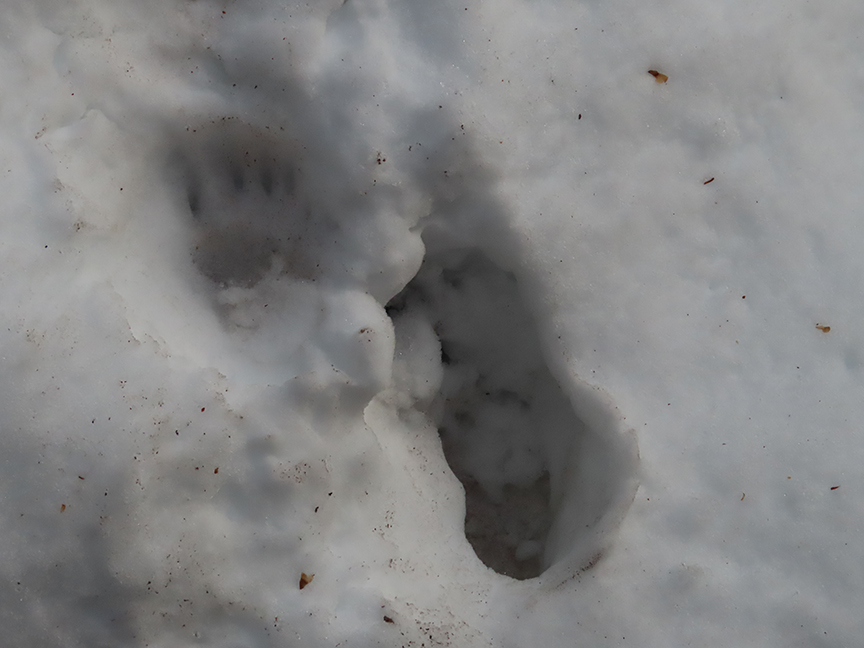
We may think of winter as a time when it is too cold to go outside.
But it’s an amazing time of year for nature. Some of the most brilliant objects and constellations hang in the winter sky, such as vivid Orion, stunning Sirius in Canis Major, Taurus, and the twinkling Pleiades.
Get out a pair of binoculars and check out the sweeping Orion Nebula in Orion’s sword, then scan over to the star cluster the Pleiades, which lies 444 light years away. See that V formation in Taurus? That’s a star cluster, too, the Hyades, only we are so close to it (only 153 light years away!) that it doesn’t look like a cluster.
And during the day is a great time to venture out into the snow and look for wildlife tracks. I’ve often delighted to the tracks of black bears, coyotes, bobcats, mountain lions, snowshoe hares, and the tiny little pattern of flying squirrel feet bounding across the snow.
Photo of black bear tracks in snow by Alice Henderson
Thank you for subscribing and reading, and I will see you next time!
If you would like to subscribe, unsubscribe, or change the address where you receive notification of Alice’s newsletter, please send an email to newsletter [AT] alicehenderson [DOT] com.
Copyright © 2023 by Alice Henderson. All rights reserved.
NOVEMBER/DECEMBER 2022

Photo from my travels: American pika in Yellowstone National Park
Photo by Alice Henderson
LATEST PUBLISHING NEWS
A GHOST OF CARIBOU IS NOW AVAILABLE!

The third book in the Alex Carter series is now available in hardcover, ebook, and audiobook.
Building upon the highly acclaimed debut of A Solitude of Wolverines and its follow-up thriller A Blizzard of Polar Bears comes the eagerly anticipated and electrifying third installment, in which wildlife biologist Alex Carter encounters an unsolved murder and a town in turmoil while in search of a majestic, all-but-vanished animal.
For more information, please click here.
You can order the book from a variety of sites:
AUTHOR INTERVIEWS
WCBS AUTHOR TALKS

I was delighted to be a guest on WCBS Author Talks. We talk about my latest thriller, as well as wildlife, writing, climate change, and conservation.
You can listen to the episode here.
THOUGHTS FROM A PAGE
I was honored to appear as a guest on Thoughts from a Page podcast to talk about my new novel. I always enjoy talking about wildlife and writing with the wonderful host, Cindy Burnett.
Her podcast is available wherever you get your podcasts or you can listen here.
CONVERSATIONS LIVE WITH VICKI ST. CLAIR
I was thrilled to return as a guest to Conversations Live with Vicki St. Clair. We discuss my new thriller, A Ghost of Caribou, as well as writing, wildlife, and conservation.
You can listen to the episode here.
THE BIG THRILL
I’m honored to have an author Q&A about my new thriller in December’s issue of the Big Thrill! I talk about mountain caribou, writing suspense, and inspiration.
You can read the interview here.
A GHOST OF CARIBOU GETS RAVE REVIEW ON BOOKLIST
“Readers who enjoy a well-paced, suspenseful thriller will give this book a thumbs up, but A Ghost of Caribou is more than that…. As much as we care about Alex’s fate at the hands of a killer, we also care about the animal that brought her to the mountains in the first place. There’s real passion here, and that gives the novel added substance.”
ARTICLE ON CRIMEREADS
I had the pleasure of writing an essay on CrimeReads about addressing issues in your fiction and even inspiring activism. You can read the article here.
WILDLIFE IN THE NEWS
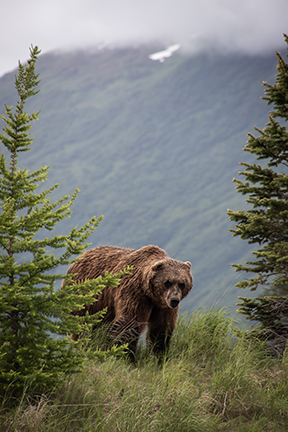
GRIZZLY BEAR COMMENT PERIOD OPEN
Right now, even though grizzly bears are still listed as threatened under the Endangered Species Act, there is a movement to strip them of their protections, paving the way for state-supported trophy hunts.
Anti-wildlife factions are seeking to delist a number of grizzly populations: a Wyoming petition seeks to strip protections from all grizzlies in the Greater Yellowstone Ecosystem, a Montana petition wants to end protection for grizzlies in the Northern Continental Divide Ecosystem, and Idaho seeks to delist all grizzlies in the entire lower 48.
The state of Montana is currently seeking public opinion on the possible delisting, but only until January 5, 2023, inconvenient timing due to the holidays. To submit your comment online, go here. For postal mail, send comments to Wildlife Division, Grizzly Bear Plan and EIS, P.O. Box 200701, Helena, MT 59620. Comments can also be emailed to fwpwld@mt.gov.
To read more about this issue, go here.
Photo by John Thomas on Unsplash
SPECIES SPOTLIGHT

ORANGUTANS
Orangutans are currently facing extinction due to the destruction of habitat for palm oil plantations. Rain forests are clearcut and planted with the oil palm tree, which not only creates a monoculture devoid of biodiversity, but steps are then taken to eradicate any native wildlife. As many as 1,000 to 5,000 orangutans are killed each year on palm oil plantations. Palm oil production is also a leading cause of climate change due to deforestation.
Other species, such as the Sumatran rhinoceros and Sumatran tiger, are being decimated by these plantations.
Unfortunately, palm oil is found in 50% of household products, including shampoos, make-up, soaps, lotions, detergents, peanut butter, even sweet food items such as pie and cookies.
You can help by no longer buying products that contain palm oil. There are numerous chemical names for palm oil derivatives including Vitamin A palmitate, palm kernel oil, sodium laureth sulphate, sodium dodecyl sulphate, stearic acid, hydrated palm glycerides, cetyl palmitate, and many other names you can check here.
To learn more about this issue, click here.
Photo by Mark Flanagan on Unsplash
INTERESTING WILDLIFE FACT

THE AMAZING EYESIGHT OF JAGUARS
The eyesight of jaguars is incredibly acute, far more sensitive than that of humans. Their eyes absorb much more light, having more rods than cones, but this makes them largely color blind. The reflective layer or tapetum lucidum (literally “bright carpet”) in the back of their eyes bounces light back, which is why their eyes glow when hit with a source of light. Just like football players on a hot summer day, black markings around their eyes cut down on the sun’s glare. Some researchers believe that they use these same black markings to communicate with other jaguars by adjusting their facial movements.
Photo by Mike van den Bos on Unsplash
GREEN TIP
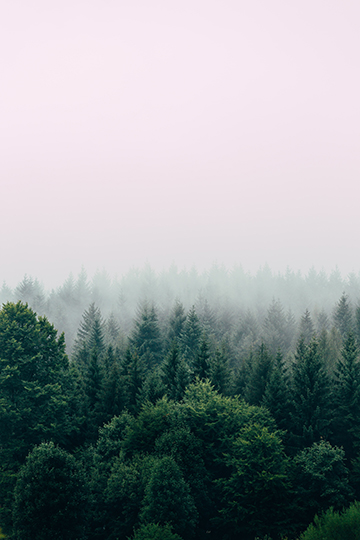
WASH YOUR CLOTHES IN COLD WATER
Washing your clothes in cold water can do a lot to cut down on pollution, saving as much as 500 pounds of carbon dioxide a year and up to 80% of the energy required to wash your clothes.
To cut down on even more pollution and save energy, consider then hanging your clothes up to dry rather than using a dryer.
In addition, choosing a washing machine that is certified by Energy Star will ensure even more energy savings and less pollution, saving 400 pounds of CO2 each year, which amounts to planting a quarter acre of trees.
Photo by Filip Zrnzević on Unsplash
VOLUNTEER OPPORTUNITY
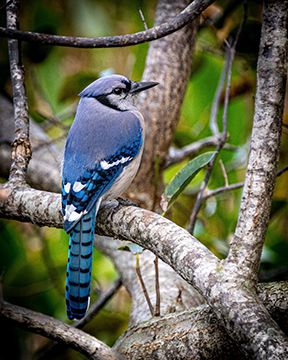
CHRISTMAS BIRD COUNT
Join in with the Audubon Society’s Christmas Bird Count between December 14, 2022 and January 5, 2023.
The Christmas Bird Count (CBC) was started in 1900 as a way of celebrating, rather than hunting, birds. Each year, thousands of bird watchers around the world tally up all of their sightings. This gives researchers an accurate picture of how bird populations are changing.
Observing areas are set up in so-called CBC “circles.” Each circle has its own 24-hour period for observing birds, so you only have to dedicate one day to contributing to this valuable project. Sign up to see which day of observation is applicable in your area’s circle.
If your area does not have an existing CBC circle, you can apply to set up your own by clicking here. If you don’t have time to contribute, but want to donate to the effort, click here.
To read more about the event and sign up to help, see this page.
Photo by Richard Sagredo on Unsplashh
EXPLORING THE WORLD
AROUND US

NASA has many exciting missions, and it’s easy to see dramatic photographs and watch stunning videos of the agency’s explorations.
Interested in checking out the stunning images coming out of the brand new James Webb Space Telescope? Check out this page.
Or how about the incredible journey of Perseverance, the latest rover to explore Mars? You can see all the dramatic images it’s capturing on the red planet right here.
Want to see more from the Artemis I mission that flew past the far side of the moon, capturing incredible images? Go here. The mission seeks to enable human exploration of the moon and Mars.
Photo by NASA on Unsplash
Thank you for subscribing and reading, and I will see you next time!
If you would like to subscribe, unsubscribe, or change the address where you receive notification of Alice’s newsletter, please send an email to newsletter [AT] alicehenderson [DOT] com.
Copyright © 2022 by Alice Henderson. All rights reserved.
SEPTEMBER/OCTOBER 2022

Photo from my travels: Mt. Robson, tallest peak in the Canadian Rockies, British Columbia
Photo by Alice Henderson
LATEST PUBLISHING NEWS
A GHOST OF CARIBOU IS AVAILABLE FOR PRE-ORDER!
Building upon the highly acclaimed debut of A Solitude of Wolverines and its follow- up thriller A Blizzard of Polar Bears comes the eagerly anticipated and electrifying third installment, in which wildlife biologist Alex Carter encounters an unsolved murder and a town in turmoil while in search of a majestic, all-but-vanished animal.
For more information, please click here.
You can pre-order from a variety of sites:
A GHOST OF CARIBOU GETS RAVE REVIEW IN PUBLISHERS WEEKLY
A Ghost of Caribou earned a glowing review on Publishers Weekly. “Evocative… a master class…breathtaking… Environmental crime fiction doesn’t get much better than this.”
You can read the review here.
A BLIZZARD OF POLAR BEARS IS NOW AVAILABLE IN PAPERBACK
On October 11, 2022, A Blizzard of Polar Bears was released in paperback. This edition has all kinds of neat extras, including two author essays about Viking exploration of North America and the author’s adventures in the Arctic, as well as reader questions for book clubs.
Links for bookstores where you can purchase this edition can be found here.
EIS, THE GERMAN TRANSLATION OF A BLIZZARD OF POLAR BEARS, IS NOW AVAILABLE!
It can be ordered here.
SOLEDAD SALVAJE, THE SPANISH TRANSLATION OF A SOLITUDE OF WOLVERINES, IS NOW AVAILABLE!
It can be ordered here.
WILDLIFE IN THE NEWS
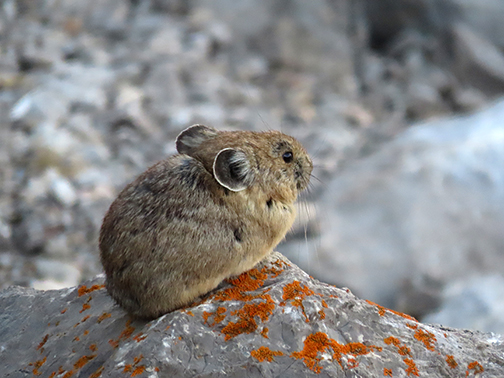
PIKAS VANISHING IN THE GREAT BASIN AND SIERRA NEVADAS
The American pika, a charismatic and vocal relative of the rabbit, is vanishing from areas in the Great Basin and the Sierra Nevada Mountains.
Pikas live in the cool spaces between rocks in talus slopes in alpine areas. They cannot survive long in temperatures above 70 degrees F. As the earth warms rapidly due to anthropogenic climate change, pikas are forced farther and farther upslope until there is nowhere higher to go, and populations then die out.
In winter, they don’t hibernate, but rely on insulating snow layers to stay warm. However, with the reduction of snowpack due to warming, this layer of protection is dwindling.
A recent Nevada report revealed that pikas are now reduced to inhabiting only twenty-two of the hundreds of mountain ranges in the state.
Read more about them here.
Photo by Alice Henderson
SPECIES SPOTLIGHT
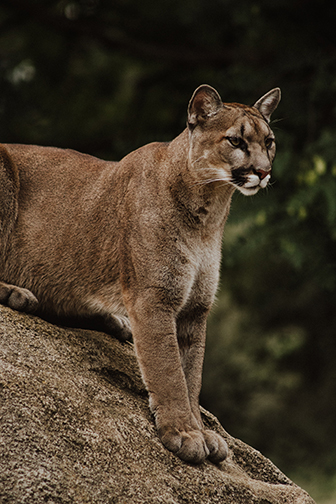
FLORIDA PANTHER
The Florida panther lives only in south Florida. Though it originally roamed as far west as Louisiana, today it occupies only five percent of its historic range, and only 100-120 remain.
The reason for this decline is habitat fragmentation and loss caused by increasing human development. Roads encroaching into their habitat mean panthers killed in vehicle collisions, and the small population means increased vulnerability to genetic isolation, diseases, and parasites.
Conservationists have long worked to get critical habitat designated for the Florida panther. They’ve also petitioned for the panthers’ reintroduction into places such as the Okefenokee National Wildlife Refuge. These attempts have been futile thus far. Though protected under the Endangered Species Act, the Florida panther still has no designated critical habitat.
You can read more about the efforts to save them here.
Photo by Priscilla Du Preez on Unsplash
INTERESTING WILDLIFE FACT
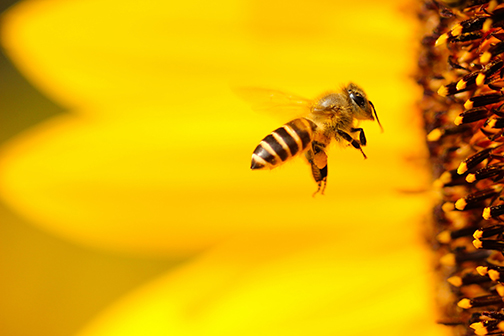
AMAZING BEES!
In September of last year, the Cumbre Vieja volcano erupted on the Canary Islands, spewing forth lava and ash and swallowing more than 3000 dwellings. Numerous Canary black bee hives were smothered by ash. When evacuation orders were finally lifted, one beekeeper returned to his property after fifty days. He discovered that tens of thousands of his bees had survived by sealing up their hives with propolis, sometimes referred to as “bee glue.” This kept the poisonous volcanic gases from getting inside the hives, where the bees survived on their own honey.
You can read more about these amazing bees here and here.
Photo by Boris Smokrovic on Unsplash
GREEN TIP

FREECYCLE
Have a washing machine, weight set, clothes, or maybe a bookcase you no longer need? Instead of throwing them out, list them on Freecycle. It’s a free website where community members can list items that can be reused.
Likewise, before making a purchase, check out your local Freecycle listings to see if something on there will work for you.
You can find all kinds of useful items on Freecycle, like tools, paint, step ladders, and more. And there are often fun items, too, like LPs and books.
Check out what your local community has to offer by entering your zip code on this website.
Photo by Sven Brandsma on Unsplash
VOLUNTEER OPPORTUNITY
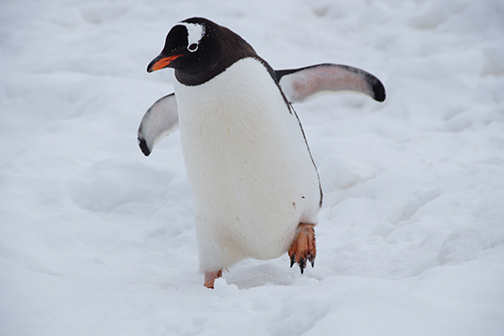
PENGUIN WATCH
Want to help with the conservation of penguins? Here’s a wonderful project you can do from your own home! Help scientists understand survival rates and breeding timing by counting penguins and their chicks recorded on time lapse cameras deployed in Antarctica and the Southern Ocean.
You can do this from anywhere — you just need an internet connection!
Read more about the project and how you can contribute here.
Photo by Cornelius Ventures on Unsplash
EXPLORING THE WORLD
AROUND US

We often think of the northern lights as things we can only see in nearly polar environments. But occasionally they reach the lower latitudes and with a little advanced notice, we can watch for them!
The Kp-index is a measure of global geomagnetic activity. It’s created from measurements made from ground-based magnetometers, and can let us know when a geomagnetic storm is imminent. The index ranges from 0, meaning calm, to 9, meaning extreme activity.
A number of websites and apps track the Kp-index, and you can even get alerts notifying you of when the Kp-index is rising. Look for numbers 5 and higher to be alerted to possible auroral activity.
Sometimes auroras are easier to view with a long exposure rather than the naked eye. So if you see that the Kp-index is high, try facing north and taking a 10 second or longer exposure on a camera.
A good website to start with for geomagnetic information is Spaceweather.com.
I photographed the aurora above in Glacier National Park in Montana.
Photo by Alice Henderson
Thank you for reading, and I will see you next time!
If you would like to subscribe, unsubscribe, or change the address where you receive notification of Alice’s newsletter, please send an email to newsletter [AT] alicehenderson [DOT] com.
Copyright © 2022 by Alice Henderson. All rights reserved.






